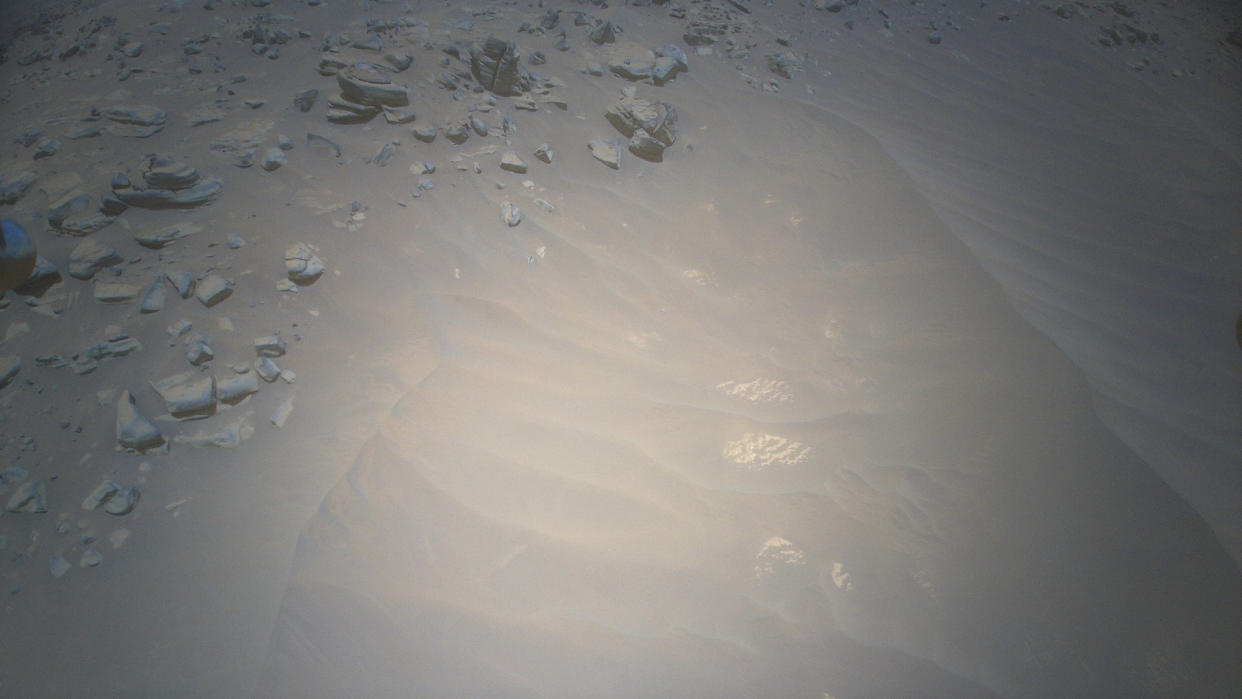NASA's Ingenuity Mars helicopter flies on back-to-back days to prep for 'solar conjunction' (video)

NASA's Ingenuity helicopter just made its 65th and 66th Red Planet flights, two short hops that helped prep the chopper for a coming stretch in which it will be cut off from ground control.
Flight 65 occurred on Nov. 2. The 4-pound (1.8 kilograms) Ingenuity stayed aloft that day for 48 seconds, covering 23 feet (7 meters) of Mars ground in the process. Then, the rotorcraft was at it again on Nov. 3 with an even briefer sortie: It lasted 23 seconds and involved a horizontal movement of just 2 feet (0.6 m), according to the mission's flight log.
Nothing went wrong on either flight; they weren't designed to chew up big chunks of Martian terrain.
"These two short flights positioned the #MarsHelicopter for the upcoming Mars solar conjunction, when mission teams will pause on sending commands for about 2 weeks," officials with NASA's Jet Propulsion Laboratory in Southern California, which manages Ingenuity's mission, said today (Nov. 7) in a post on X (formerly known as Twitter).
Related: Mars helicopter Ingenuity phones home, breaking 63-day silence

Earth and the Red Planet sit on opposite sides of the sun during Mars solar conjunction, which happens once every two years or so. Importantly for NASA's Martian explorers, this positioning means our star blocks radio signals zinging between the two planets. Mars mission teams therefore stand down from commanding their robots during this time.
"It's impossible to predict what information might be lost due to interference from charged particles from the sun, and that lost information could potentially endanger the spacecraft," NASA officials wrote in a solar conjunction explainer. "Instead, prior to solar conjunction, engineers send two weeks' worth of instructions and wait."
As that note indicates, Mars solar conjunction lasts about two weeks. This latest occurrence runs from Nov. 11 to Nov. 25 — the stretch of time during which Mars will be within 2 degrees of the sun from Earth's vantage point, NASA officials said. (For perspective: Your clenched fist held at arm's length covers about 10 degrees of sky.)
RELATED STORIES:
— Mars helicopter Ingenuity: First aircraft to fly on Red Planet
— Perseverance Mars rover snaps amazing shot of dusty Ingenuity helicopter (photo)
— Mars helicopter Ingenuity snaps incredible aerial photo of Perseverance rover during 51st flight
Ingenuity landed inside Mars' 28-mile-wide (45 kilometers) Jezero Crater in February 2021, along with NASA's life-hunting, sample-collecting Perseverance rover.
The little chopper's primary goal was to show that powered flight is possible on Mars despite the planet's wispy atmosphere, which is just 1% the density of Earth's at sea level.
Ingenuity aced that task over five flights in the spring of 2021. NASA then granted the helicopter an extended mission, on which Ingenuity is serving as a scout for Perseverance. Over its 66 flights to date, Ingenuity has flown a total of 9 miles (14.5 kilometers) and stayed aloft for nearly 119 minutes, according to the mission flight log.

